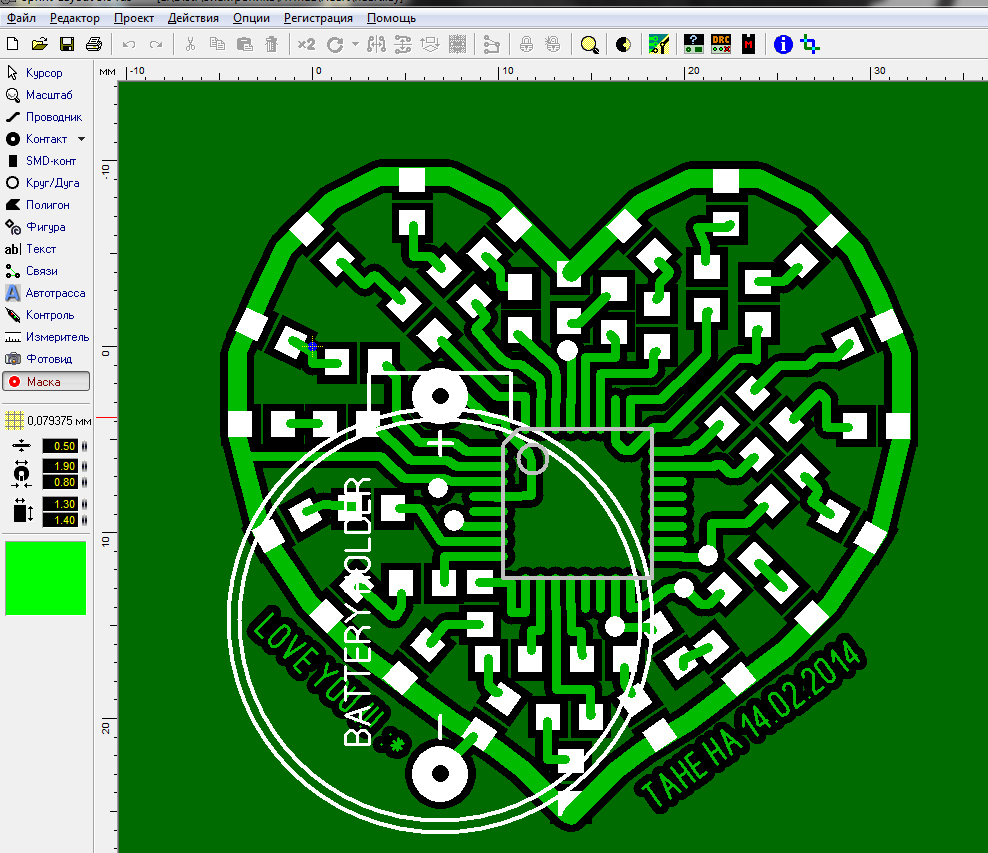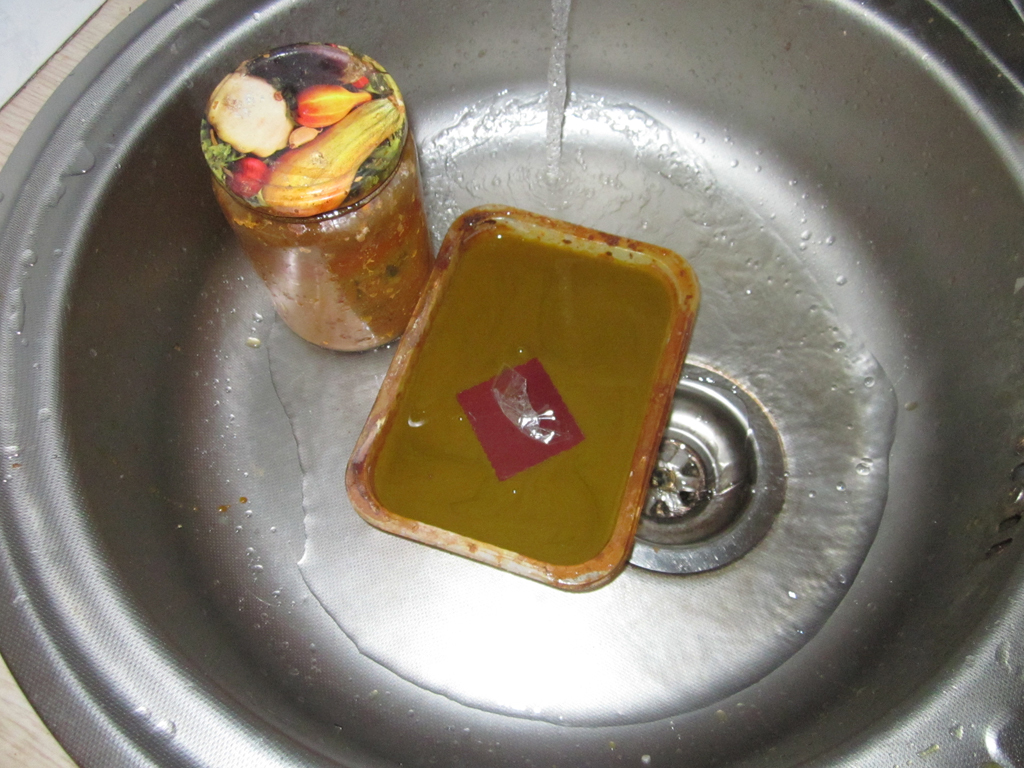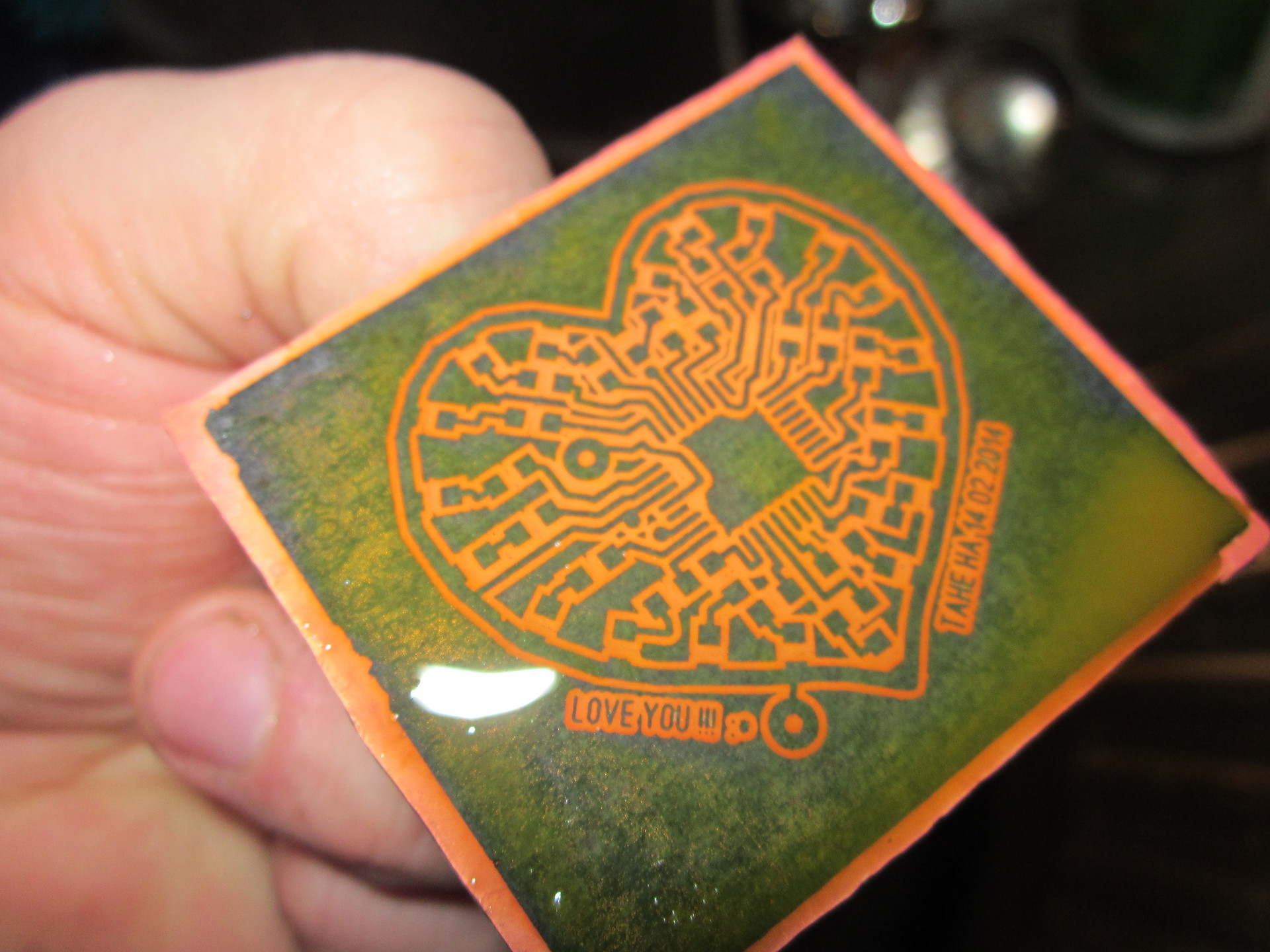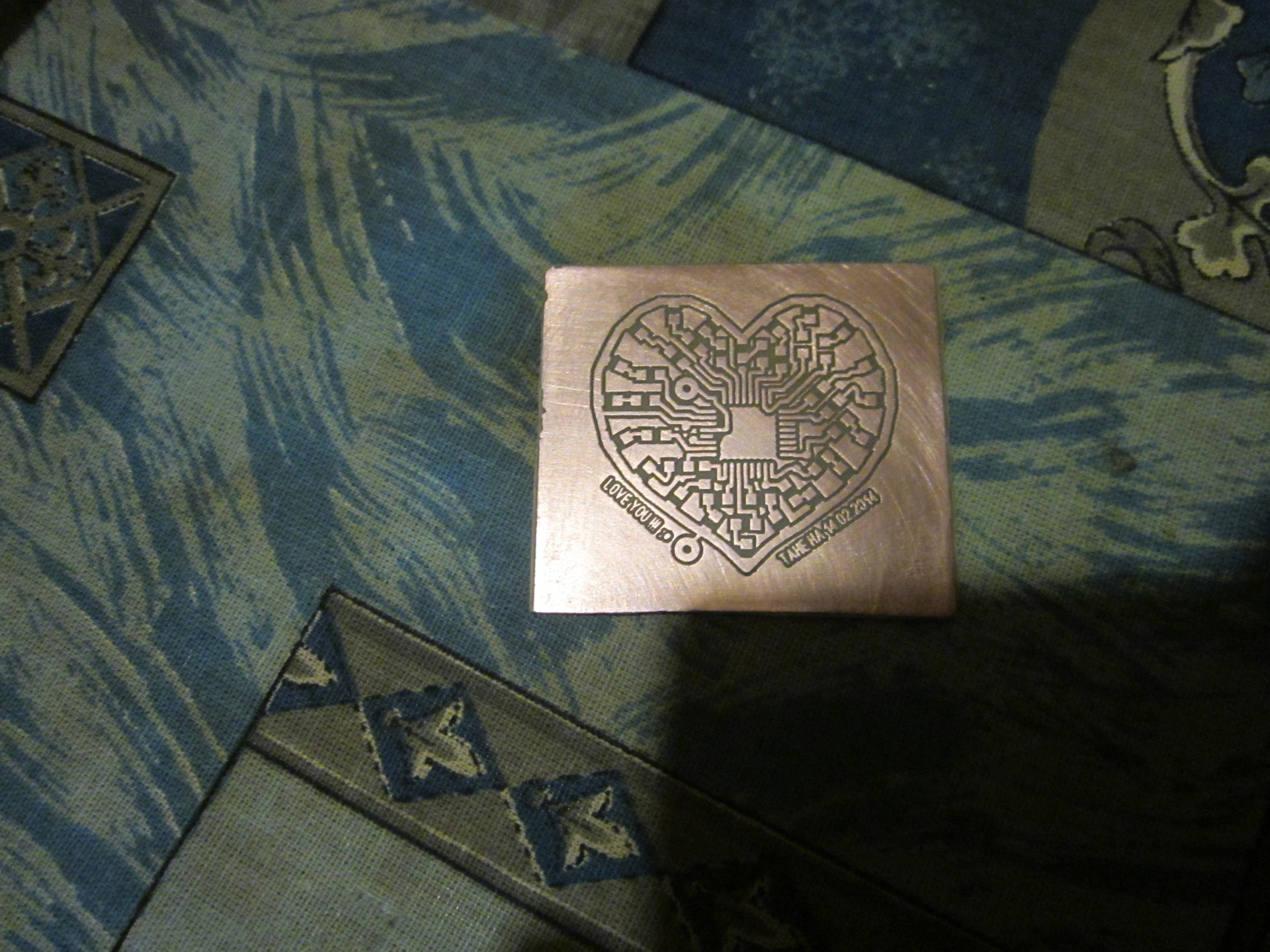Another heart on Atmega
Not so long ago I became interested in circuitry for music (amplifiers, guitar effects) and somehow quietly switched from analog to digital electronics. The choice fell on Atmel microcontrollers, because the comrade was pretty good at them and if anything, there was someone to ask. The first thing I did was assemble the programmer (STK500 clone) and set about my first project: flashing LEDs. And since the case was nearing February 14, he decided to combine business with pleasure and please his beloved wife. The inspiration for the idea was a post by Terehoff : “How to please your beloved on February 14th” .
To begin with, a box was selected and bought, then, guided by the size, I began to develop a board. For drawing I used Sprint-Layout. The number of diodes was selected by the number of available, that is, 20 pcs. As a "heart": Atmega8.

To transfer the image to textolite used the good old LUT. That is, the printing was done with a laser printer on smooth paper advertising a supermarket, and translated with an iron. When printing, the main thing is not to forget to mirror the image, and iron it thoroughly until all the tracks are visible through the paper. Washed off paper in hot water without mechanical processing. I just waited until it spreads, I had to wait about 20 minutes, it turned out to be good paper.

Poisoned in a solution of ferric chloride, putting in a sink and turning on hot water. If you are preparing a fresh solution, when the powder is dissolved in water, heat is generated and there is no need for heating. All subsequent use of the solution must be heated, otherwise the etching process will be delayed and will be "frayed" - sort of wormholes on the tracks.

For the convenience of examining the result, I glued a piece of stationery tape to the board.

After weed, I used the hard part of the sponge for dishes and soap to wipe the toner from the circuit board. The result was satisfied, nothing superfluous was pitted, the board looks as it was intended.

After I unsoldered all the elements, I realized that I had completely forgotten to separately remove the programming connector. I had to build another cable and solder directly to the board.

How the programming environment used CodeVisionAVR. Work with LEDs is probably a kind of "Hello World!" In the programming of microcontrollers. To light the LED, we tell the microcontroller to apply voltage to the desired leg.

A cr2032 battery was used for power. A piece of thin Plexiglas is fixed above the board; when you open the power cover, it is fed by closing the reed switch located on the back of the box. For long-term durability of the device, 1k resistors were supplied, while periodic viewing it still has not sat down (it was given on 02/14/2014).
There was a question about connecting the board via a reed switch. To do this, I had to do the following:
1. Cut the track going from the 4 legs of the MK to the five-point “+” connector on the battery (I did it before etching, having cleaned the toner)
2. Feed the “+” wires through the reed switch to the 6th leg of the MK through the drilled hole. (that is, under the board)
Datashit to MK
Sources, binary and circuit
To begin with, a box was selected and bought, then, guided by the size, I began to develop a board. For drawing I used Sprint-Layout. The number of diodes was selected by the number of available, that is, 20 pcs. As a "heart": Atmega8.

To transfer the image to textolite used the good old LUT. That is, the printing was done with a laser printer on smooth paper advertising a supermarket, and translated with an iron. When printing, the main thing is not to forget to mirror the image, and iron it thoroughly until all the tracks are visible through the paper. Washed off paper in hot water without mechanical processing. I just waited until it spreads, I had to wait about 20 minutes, it turned out to be good paper.
Poisoned in a solution of ferric chloride, putting in a sink and turning on hot water. If you are preparing a fresh solution, when the powder is dissolved in water, heat is generated and there is no need for heating. All subsequent use of the solution must be heated, otherwise the etching process will be delayed and will be "frayed" - sort of wormholes on the tracks.

For the convenience of examining the result, I glued a piece of stationery tape to the board.
After weed, I used the hard part of the sponge for dishes and soap to wipe the toner from the circuit board. The result was satisfied, nothing superfluous was pitted, the board looks as it was intended.
After I unsoldered all the elements, I realized that I had completely forgotten to separately remove the programming connector. I had to build another cable and solder directly to the board.
How the programming environment used CodeVisionAVR. Work with LEDs is probably a kind of "Hello World!" In the programming of microcontrollers. To light the LED, we tell the microcontroller to apply voltage to the desired leg.

A cr2032 battery was used for power. A piece of thin Plexiglas is fixed above the board; when you open the power cover, it is fed by closing the reed switch located on the back of the box. For long-term durability of the device, 1k resistors were supplied, while periodic viewing it still has not sat down (it was given on 02/14/2014).
There was a question about connecting the board via a reed switch. To do this, I had to do the following:
1. Cut the track going from the 4 legs of the MK to the five-point “+” connector on the battery (I did it before etching, having cleaned the toner)
2. Feed the “+” wires through the reed switch to the 6th leg of the MK through the drilled hole. (that is, under the board)
Datashit to MK
Sources, binary and circuit
